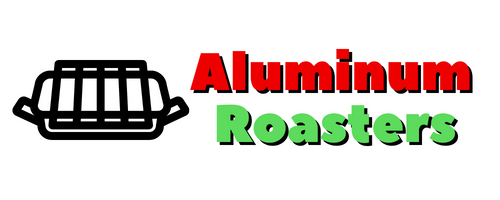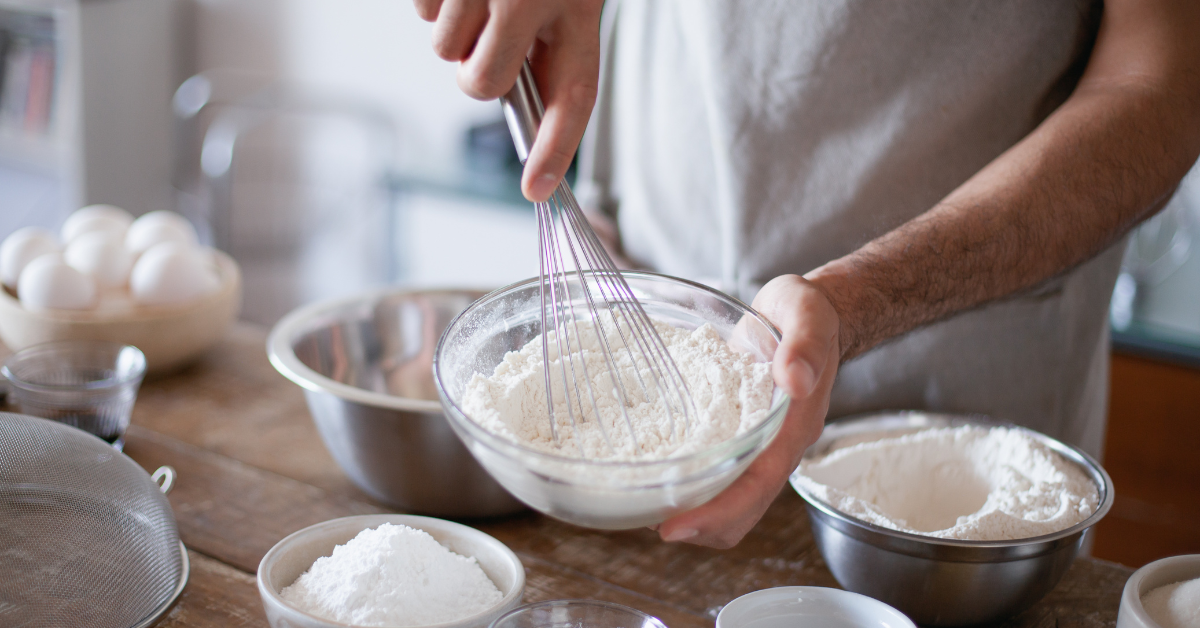Aluminum roasters are a popular choice for cooking and storing food due to their lightweight design and versatility.
But can they be used for baking as well?
While aluminum roasters have many advantages, there are also some considerations to keep in mind when using them for baking.
In this article, we’ll explore the benefits and drawbacks of using aluminum roasters for baking, as well as provide some tips for getting the best results.
Can Aluminum Roasters Be Used For Baking?
Yes, aluminum roasters can be used for baking. While there are some considerations to keep in mind, such as the potential for aluminum to react with acidic ingredients and the risk of contamination, aluminum roasters have many advantages for baking, including their lightweight design, even heat distribution, and affordability.
Advantages of Aluminum Roasters for Baking
There are several reasons why aluminum roasters can be a convenient and effective choice for baking:
- Lightweight and easy to handle: Aluminum roasters are much lighter than many other materials, such as glass or stainless steel. This makes them easy to move around the kitchen and maneuver in and out of the oven.
- Even heat distribution: Aluminum is a good conductor of heat, which means that it can help distribute heat evenly throughout the roaster. This can be beneficial for achieving consistent results in your baked goods.
- Affordable and widely available: Aluminum roasters are generally less expensive than other materials, and they are widely available in stores and online. This makes them a budget-friendly option for those looking to add one to their kitchen arsenal.
Considerations for Using Aluminum Roasters for Baking
While there are many advantages to using aluminum roasters for baking, there are also some things to keep in mind:
- Reaction with acidic ingredients: Aluminum can react with acidic ingredients such as tomatoes or citrus, which can affect the taste of the finished dish. If you are planning to bake a dish with acidic ingredients, it may be best to use a roaster made of a different material.
- Potential for aluminum contamination: There is some debate about the potential for aluminum to leach into food, especially when using older or damaged roasters. While the risk of contamination is generally considered low, it is something to be aware of if you are concerned about aluminum intake.
- Staining and discoloration: Aluminum roasters can become discolored or stained over time, which can affect the appearance of the finished dish. While this is generally not a health concern, it can be unsightly and may affect the overall appeal of your baked goods.
Recommended: How Do I Prevent My Aluminum Roaster From Rusting?
Tips for Using Aluminum Roasters for Baking
While aluminum roasters have some limitations for baking, there are a few things you can do to get the best results:
- Avoid using aluminum roasters for dishes with acidic ingredients: If you are planning to bake a dish with acidic ingredients, it is best to use a roaster made of a different material to prevent the aluminum from reacting with the acid.
- Use a liner or parchment paper: To prevent aluminum contamination and staining, consider using a liner or parchment paper in your aluminum roaster. This will also make it easier to remove the baked goods from the roaster when they are finished.
- Regularly check for damage and replace roasters if necessary: Over time, aluminum roasters can become damaged or worn, which can increase the risk of aluminum leaching into your food. Make sure to regularly inspect your roasters for any damage, and replace them if necessary.
Comparison of Aluminum Roasters to Other Types of Bakeware
There are many different materials that can be used for bakeware, including glass, ceramic, and non-stick coatings.
How does aluminum compare to these other options?
- Glass: Glass bakeware is known for its durability and ability to withstand high temperatures. It is also transparent, which can be helpful for keeping an eye on your baked goods as they cook. However, glass is heavier and more fragile than aluminum, and it can take longer to heat up and cool down.
- Ceramic: Ceramic bakeware is often prized for its aesthetics, and it can be found in a wide range of colors and patterns. It is also a good conductor of heat, similar to aluminum. However, ceramic is heavier and more fragile than aluminum, and it is more prone to chipping and cracking.
- Non-stick coatings: Non-stick bakeware is designed to make it easier to remove baked goods from the pan, and it can be helpful for preventing sticking and burning. However, non-stick coatings can scratch or wear off over time, and they are not suitable for use at high temperatures.
Recommended: Why should I use an Aluminum Roaster Instead of a Different Type of Roaster?
Techniques for Properly Cleaning and Maintaining Aluminum Roasters
Proper cleaning and maintenance can help extend the life of your aluminum roasters and ensure that they continue to perform well.
Here are a few tips:
- Hand wash: To avoid damaging the aluminum, it is best to hand wash your roasters rather than putting them in the dishwasher. Use a soft sponge or brush and a mild detergent, and avoid using abrasive materials or harsh chemicals.
- Dry thoroughly: After washing, make sure to dry your roasters thoroughly to prevent water spots and rusting. You can either air dry them or pat them dry with a soft cloth.
- Store carefully: When not in use, store your aluminum roasters in a dry place to prevent rusting. It is also a good idea to stack them with parchment paper or towels in between to prevent scratching.
Suggested Reads:
Can I Put an Aluminum Roaster in The Dishwasher?
What Is The Best Way To Store an Aluminum Roaster?
Suggestions for Specific Recipes That are Well-Suited for Baking in Aluminum Roasters
While aluminum roasters are suitable for a wide range of baked goods, there are some recipes that may be particularly well-suited for this type of bakeware:
- Roasts: Aluminum roasters are often used for cooking roasts, such as beef, pork, or poultry, due to their ability to distribute heat evenly and their large size.
- Casseroles: Casseroles, such as lasagna or enchiladas, can also be baked in aluminum roasters, as they are large enough to hold the ingredients and have a rim to contain any spills.
- Sheet cakes: Sheet cakes, such as chocolate or yellow cake, can be baked in aluminum roasters, as they are often the same size as a standard 13×9-inch roaster.
Tips for Using Aluminum Roasters in a Convection Oven
If you have a convection oven, you may need to make some adjustments when using aluminum roasters for baking.
Here are a few tips to keep in mind:
- Reduce the temperature: Convection ovens tend to cook food faster than conventional ovens, so you may need to reduce the temperature by 25-50 degrees Fahrenheit when using an aluminum roaster.
- Use a lower rack: To prevent burning or overbrowning, place the aluminum roaster on a lower rack in the oven. This will allow the hot air to circulate more evenly around
Also Read: Can I Use an Aluminum Roaster on a Ceramic Stove?
Conclusion
In summary, aluminum roasters have many advantages for baking, including their lightweight design, even heat distribution, and affordability.
However, there are also some considerations to keep in mind, such as the potential for aluminum to react with acidic ingredients and the risk of contamination.
By following a few simple tips, you can use aluminum roasters for baking with confidence, knowing that you are getting the convenience and performance that they offer.
While aluminum roasters have some limitations, they can still be useful and convenient tools in the kitchen with a little care and attention.

